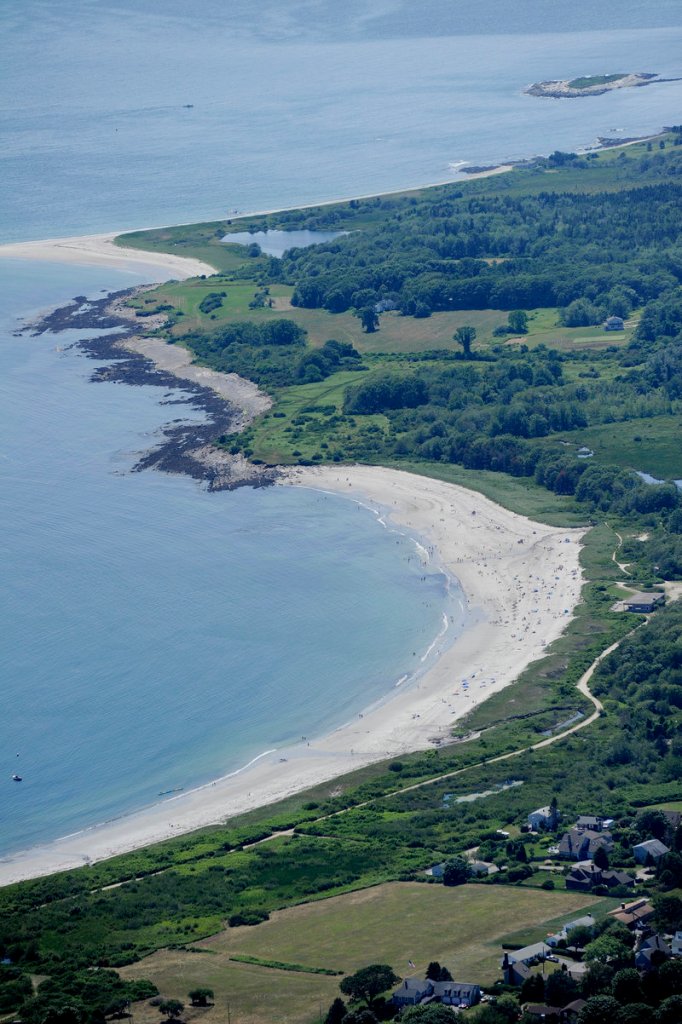One of the biggest benefits of living in Maine is our proximity to the ocean. What we don’t want, however, is for our beautiful beaches to end up underwater.
New research shows that’s happening, and sooner than we expected.
Sea level rise is accelerating along the New England coast. In fact, the Atlantic Ocean is rising up to four times faster in this “hotspot” than along the rest of the U.S. coastline.
“We can’t view sea level rise as uniform, like filling up a bath tub,” Asbury Sallenger of the U.S. Geological Survey in St. Petersburg, Fla., told the U.K. Guardian. “Some places will rise quicker than others, and the whole urban corridor of northeast U.S. is one of these places.”
That’s us.
Portland is already preparing for the deluge. A risk analysis completed in February showed that sea levels could rise up to six feet, leaving the city’s wharves and piers — along with parts of the Back Cove, Bayside and Stroudwater neighborhoods — waterlogged.
Scientists aren’t sure why sea levels are rising faster along the northern Atlantic coast. Sallenger said slower Atlantic currents could be creating a “slope” of ocean water. But he’s very clear on what’s causing sea level rise overall.
“We came up with a very clear correlation between the acceleration of sea level rise and rising temperature in the hot spot area. That suggests to me that as long as temperature continues to rise, the hot spot will continue to grow.”
What’s to blame for higher temperatures? Human population growth, in large part.
In only 40 years, the world’s population has doubled, from 3.5 billion to more than 7 billion. More people require more energy, and much of that energy today comes from burning fossil fuels. As population rises, so do carbon emissions. As carbon emissions rise, so does the sea.
World population is growing by 80 million people a year. That’s like adding nearly four new Portlands every day. More people means more carbon in the atmosphere, even though carbon emissions vary wildly from place to place. Emissions don’t recognize national and state borders.
There is no easy solution to healing our planet. But there’s a pretty simple path to get part of the way there: Real investment in family planning. Let’s do what we can to ensure that women and couples worldwide have the ability to decide when, whether and how many children they want.
Half of U.S. pregnancies are unintended, resulting in well over a million unplanned births each year. And according to the Guttmacher Institute, about 222 million women in the developing world want to avoid pregnancy but have no access to affordable and appropriate modern contraception.
If we could meet that need — and reduce our own rates of unplanned pregnancy and greenhouse gas emissions here in the United States — we might stabilize annual carbon emissions by 2050 and perhaps hold back the tide on our rising waters.
Despite strong opposition in some political quarters, the U.S. plays a leadership role by investing in voluntary international family planning — $610 million in 2012. That’s about $2 per American per year.
Even in these tough economic times, that seems like a small price to pay for helping to protect our coastlines.
Let’s do what we can to save our rocky shores and beaches and give everyone a better quality of life. It’s good for Maine — and the world.
— Special to the Press Herald
Send questions/comments to the editors.



Success. Please wait for the page to reload. If the page does not reload within 5 seconds, please refresh the page.
Enter your email and password to access comments.
Hi, to comment on stories you must . This profile is in addition to your subscription and website login.
Already have a commenting profile? .
Invalid username/password.
Please check your email to confirm and complete your registration.
Only subscribers are eligible to post comments. Please subscribe or login first for digital access. Here’s why.
Use the form below to reset your password. When you've submitted your account email, we will send an email with a reset code.